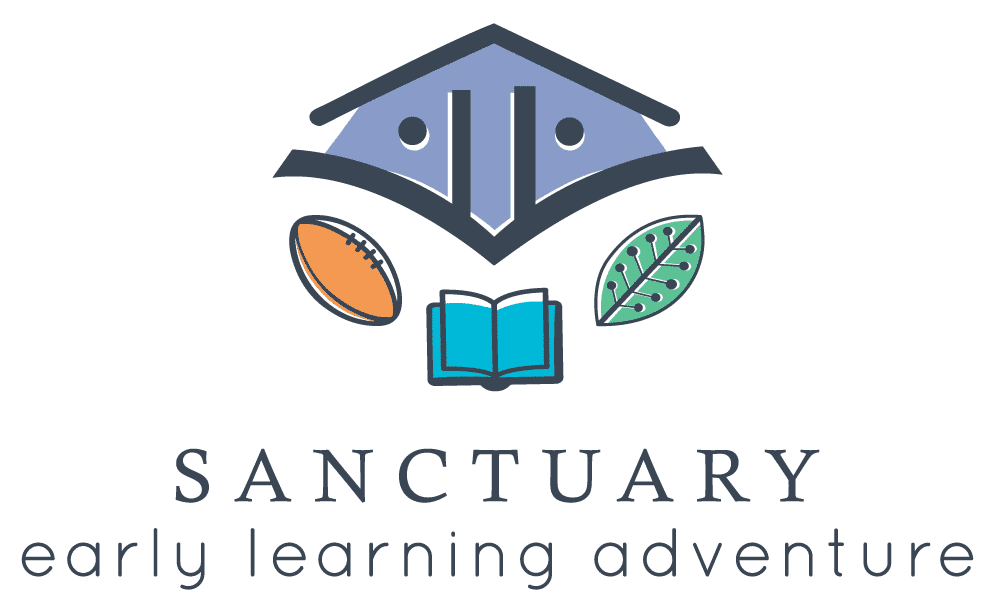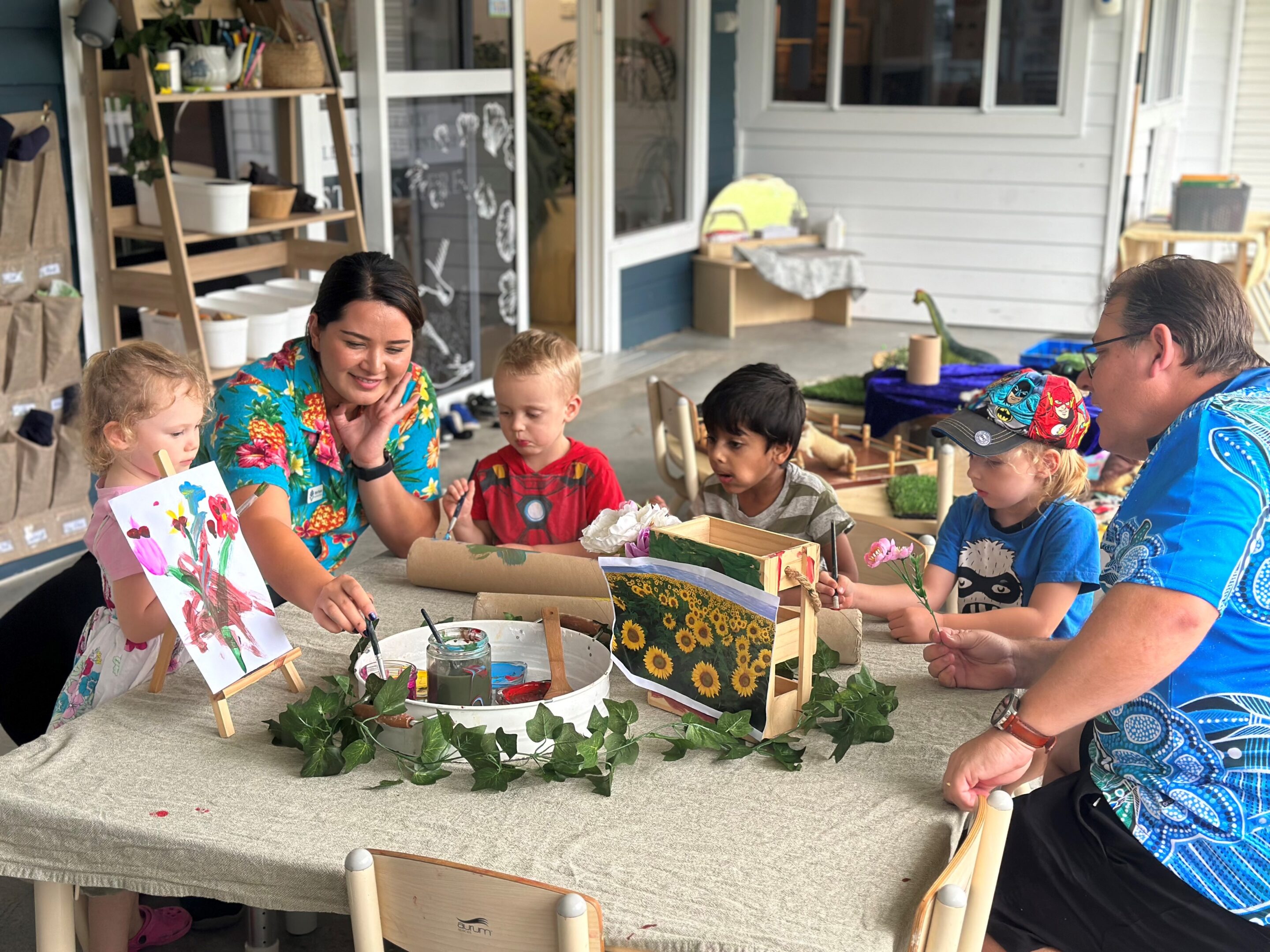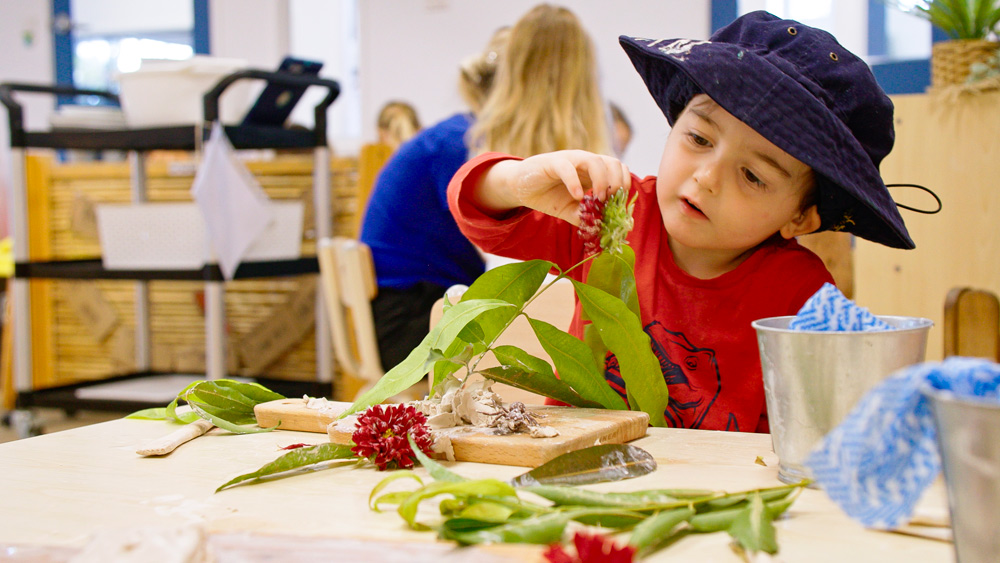At Sanctuary Early Learning Adventure, every day begins with a story.
“We choose a story specifically to enhance an interest, such as books about mums in the lead-up to Mother’s Day, or to support a need we’ve observed, like the importance of sharing and being kind,” says Sanctuary early childhood teacher, Claudia Smith.
Reading is crucial to early learning,Claudia explains, because it develops a child’s understanding of the world. “Ninety percent of brain development happens from birth to age five, and research shows that children who are read to when they’re young learn to speak, read and write more easily,” she adds. “If you read three books a day to your child from birth, they will have heard around 5,000 stories by the time they’re five years old.”
There are many proven benefits of reading to young children, including fast-tracked literacy and language skills and increased creativity and emotional intelligence. A 2012 Australian study found that children who had been read to fared much better in national literacy tests that those that did not. Another analysis of 29 studies found reading aloud to children in the early years resulted in significant positive effects for children’s language, phonological awareness, print concepts, comprehension and vocabulary.
Make Reading A Reading A Fun And Enriching Experience
- For babies: “Books with black and white pictures stimulate the development of a baby’s optic nerve, teaching the eyes and brain to coordinate and function properly,” says Claudia. Multi-sensory touch-and-feel books with different textures and sounds that will be exciting for bub to explore.
- For toddlers: In our previous blog, Support your child’s early learning during COVID-19, Claudia shares the benefits of reading the same book to your child every day. She also suggests letting your toddler hold the book and turn the pages themselves, discussing the illustrations on each page, and providing your littlies lots of time to explore the book at their own pace.
- For pre-schoolers: “The best books have humour, suspense, imagination, stories you can join in with, repeated refrains, and classic books that have stood the test of time (in my personal experience, books about poo are very popular!)” says Claudia. “After you’ve read the story, ask your child to retell it in their own words and encourage language such as ‘once upon a time’ and ‘they all lived happily ever after’, using prepositions such as first, next, finally.”
Remember, too, that reading needn’t be limited to books. Day-to-day life is full of valuable opportunities to engage your child’s growing love of reading. “Explore the print in your environment— logos and signs, packaging, magazines, road names, number plates— words and letters are everywhere,” Claudia says. “When children recognise the logo of your favourite restaurant or local supermarket, this is all emergent reading and to be encouraged.”
Storytelling: Sharing Life Stories
Oral storytelling can also play an important part in early literacy development, and sharing your life stories with your child is especially meaningful, says Louise Phillips, an associate professor in education at James Cook University.
“It’s a lovely way to build relationships,” she explains. “Children want to know about their parents’ experiences. They can learn from you and come to know what has shaped you as a person — what has made you who they are. I tell my children my life stories and their ancestors’ stories, and they ask to hear them again at different times when new questions [about life] arise. Telling your own stories to your children provides enculturation into your family folklore.”
Not sure which life stories to share? Try to select one that attempts to resolve a problem. “For young children resolution is important as it helps to build their sense of security in the world,” says Louise. “Older children can start to appreciate cliff-hanger endings.”
Some tips to help you get started:
- Create a storytelling ritual. Decide on a regular time and place with your child.
- Choose a story that speaks to you. Select one you appreciate that also conveys a meaningful message.
- Know the plot well. Tell it with your own words.
- Use dynamic vocal, facial and body expression. Use your child’s responses to gauge if you need to be livelier. You’ll need to be more dynamic for younger children.
- Actively involve your child. Let them play a special role in the story — they can play different characters, or say chants.
If it doesn’t come naturally to you at first, don’t worry. Louise says everyone has the potential to become an excellent storyteller. “Practise. Listen and draw from other storytellers. Above all else, believe in the wonder and joy of stories.”






